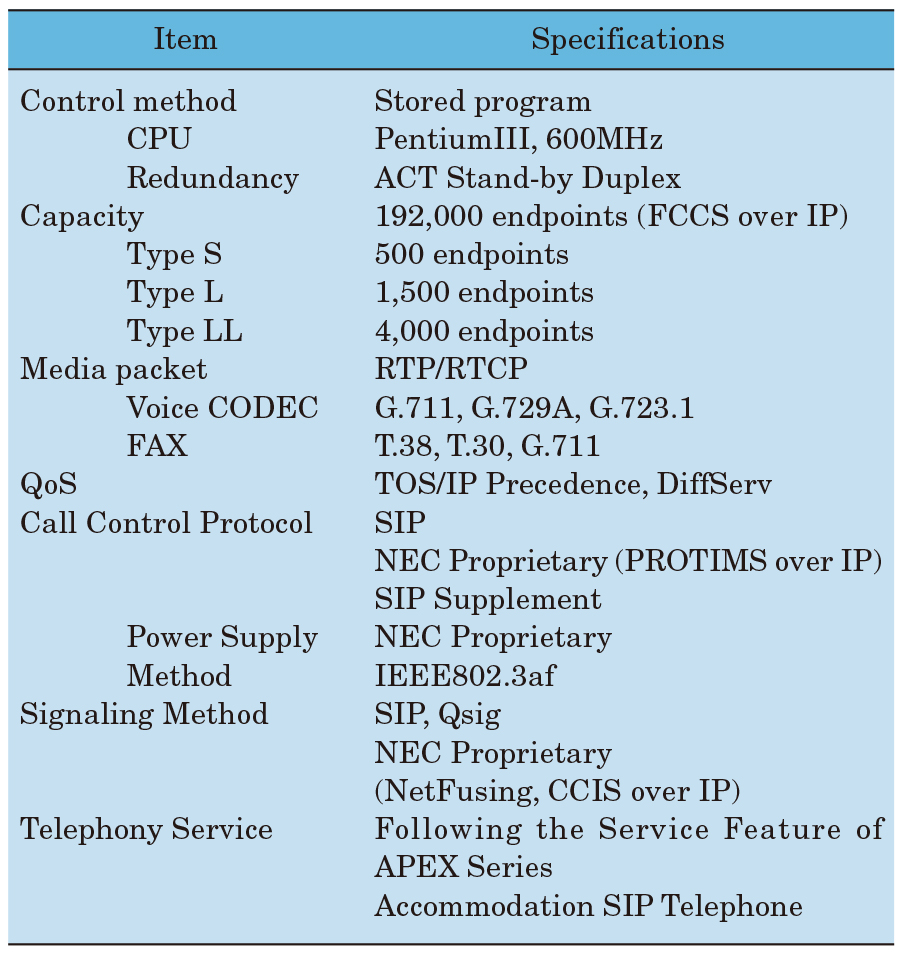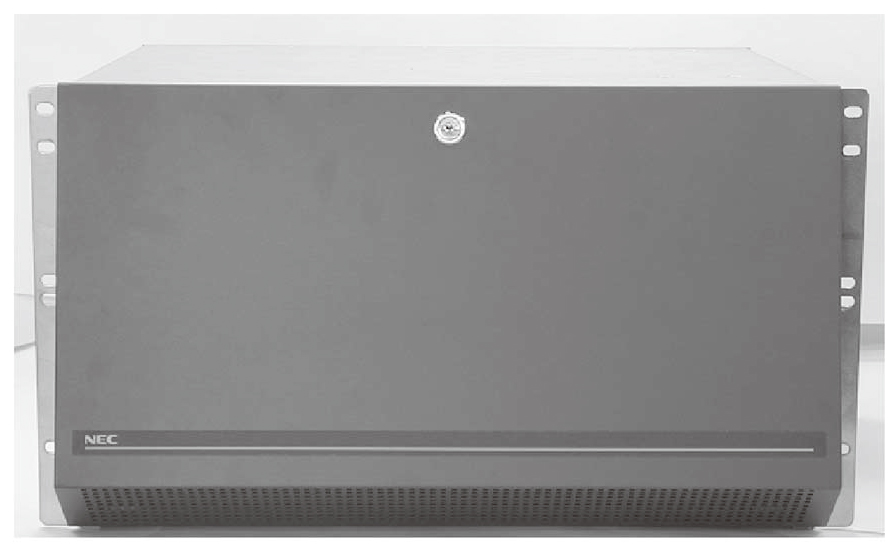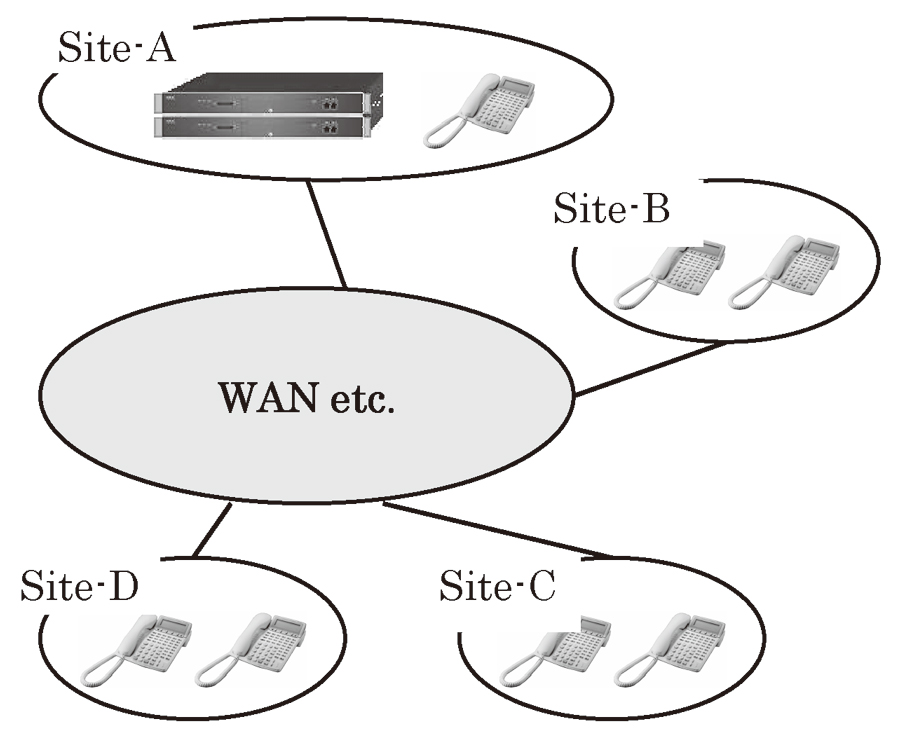Global Site
Displaying present location in the site.
SIP Telephony Server UNIVERGE SV7000
Vol.1, No.4, Fall 2004, Special Issue: IT/Network Integrated Solution “UNIVERGE”The IP convergence is needed for enterprise networking by popularization of Broadband. In order to respond to these market needs, we have developed newly architectured SIP Telephony Server UNIVERGE SV7000 system which integrates IT System and Telephony System with Open SIP Protocol Interface.
1. INTRODUCTION
The demand for enterprise networking is rapidly moving toward IP convergence and Broadband communication ratio maximize the work efficiency and minimize the total cost of ownership along with the Internet growth.
In order to meet these market needs, we have provided IP-PBX APEX7600i system which covers IP Telephony and IP Networking. And recently we have newly developed UNIVERGE SV7000, an IP Telephony Server that provides an advanced voice and data integrated service using SIP, the IP Telephony Protocol.
2. FEATURE OF THE UNIVERGE SV7000
The UNIVERGE SV7000 provides the conventional features that were provided by the existing PBX, and the new features focusing on IP telephone and IP network. And it can also operate as the conventional PBX by using PIR, which accommodates the existing interface.
2.1 Full IP Telephony with Soft Switch
The UNIVERGE SV7000 connects IP telephones and existing telephones by one-link. This one-link connection provides high-quality voice communication.
2.2 Existing PBX Services
The UNIVERGE SV7000 can provide the same advanced telephony service as the existing PBX and also makes interoperability and feature transparency available between the existing terminal and the multi-function IP telephone (DtermIP/IPterm Series).
With these features, a user can migrate to the IPbased infrastructure without inconvenience.
2.3 Use of Standard Protocol
The UNIVERGE SV7000 operates with “SIP” the IP Telephony Protocol as the call control protocol.
Plural protocols may be used mixed and the communication between different protocols are also available.
2.4 Ecology
UNIVERGE SV7000 has been developed with various kinds of environmental considerations. By driving the energy saving design, resource saving design and a policy of green procurement have led to achieving the criteria of NEC’s ECO symbol products.
3. SYSTEM OVERVIEW
3.1 System Capacity
The UNIVERGE SV7000 has following three models.
- Type S: 500 Endpoints
- Type L: 1,500 Endpoints
- Type LL: 4,000 Endpoints
These models readily support capacity expansion by FCCS over IP, which is possible up to 192,000 endpoints (Table I).
Table I UNIVERGE SV7000 specifications.

3.2 System Structure
The UNIVERGE SV7000 has three devices for providing VoIP feature. The picture of each device is shown in Photo 1 and Photo 2.


- 1)TP (Telephony Processor)
The TP is the IP Telephony device that provides Call Control function, Terminal Management function, Network Management function and the rich telephony features. It has an ACT/STBY redundant function, and the application software that controls both IP and the existing telephony. The TP controls the PIR and MG (Media Gateway). - 2)SP (SIP Processor)
The SP is the IP Telephony device that controls the IP terminal and the SIP terminal. It provides an open interface that integrates the IP and Network devices. - 3)PIR (Line Concentration Unit)
The UNIVERGE SV7000 features PIR to provide the same interface as the existing PBX.
Thus, the UNIVERGE SV7000 can provide an open interface that provides advanced voice/network device integration.
4. SERVICE FEATURES
4.1 Terminal Service
- 1)SIP Terminal
The UNIVERGE SV7000 accommodates the following terminals that use SIP Protocol.- SIP telephone (NEterm50)
- SIP terminal adapter (TE20-TA)
- Wireless LAN Cordless Handset (MH210 JustPhone)
The interoperability with these SIP terminals and terminals used by the APEX series is available. - 2)SIP Multi-Line Function
Multi-line function is provided to SIP terminals, the same as the existing PBX, using SIP protocol. - 3)Accommodation of the Existing Terminal
The UNIVERGE SV7000 accommodates the following terminals that are provided by the APEX series.- Multifunction IP Phone (Dterm85IP, IPterm30)
- PHS Base Station (IP-BS)
- Media Gateway Unit Series
The UNIVERGE SV7000 provides all of the service features that are available with the existing PBX when using terminals shown above. - 4)IP Conference Function
The UNIVERGE SV7000 provides the following functions by using the IP conference device (VS-32).- Three-party conferencing
- Conference call (8 party/16 party/32 party)
- Announcement function
- IP external suspension sound function
4.2 IP Centrex Service
In the case of existing PBX networking, the PBXs are placed in each site. With the UNIVERGE SV7000, IP Centrex service which puts only terminals to each site will be supported. IP Centrex service will reduce TCO. The IP Centrex service is described in Fig. 1.

4.3 Gateway Service
The UNIVERGE SV7000 has the following interfaces to connect to the public network.
- Analog interface
- ISDN interface
- IP PSTN (050 nets)
The UNIVERGE SV7000 can be connected to the existing PBX network by using a VoIP Gateway device.
- 1)IP PSTN (050 nets)
The SIP Protocol is becoming the Standard protocol for the Public Telephone Network and the Enterprise Network. The UNIVERGE SV7000 also provides the Open Network connection by supporting SIP Protocol.
Connecting to the Public IP Telephone Network by one-link is done by accommodating MG (SIP) to the UNIVERGE SV7000. - 2)Existing PBX Network
The UNIVERGE SV7000 can be connected to the existing PBX network by using a VoIP Gateway device (IPMASTER-104X Series). The connection of a full IP telephony network and the existing PBX network will be available by using IPMASTER-104X.
4.4 Networking Service
- 1)CCIS over IP
The CCIS over IP Service is a peer-to-peer networking service developed based on No.7 Signaling protocol (CCIS). The CCIS control signal is communicated between TPs via Protocol Handler.
The conventional CCIS feature that is provided by APEX7600i is also provided with the UNIVERGE SV7000. Networking with APEX3600i is also available. - 2)FCCS over IP
Netfusing (FCCS signaling) for the advanced service transparency between plural SV7000 over IP is also available and features peer-to-peer voice packet communication.
The UNIVERGE SV7000 can expand its capacity by this feature, the maximum capacity being 192,000 endpoints. The UNIVERGE SV7000 can be connected to APEX7600i by this feature.
4.5 Operations and Maintenance Service
The UNIVERGE SV7000 provides the operations and maintenance service for a pure IP telephony environment.
- 1)Voice Quality Management
The TP of UNIVERGE SV7000 collects the packet reaching status of the RTP packets and the signaling packets for the Call Control of each terminal. - 2)SNMP (Simple Network Management Protocol)
The TP of UNIVERGE SV7000 features SNMP Protocol.
It can act as the SNMP Agent of the network and can be managed as one of the LAN device. Not only standard MIB II but also other information (such as the CPU load, system alarm (MJ/MN) and traffic information) can be read out by using the Expanded MIB. - 3)System Manager-WEB (O&M Interface Command)
The configuration of SV7000 can be done with the web-based tool. It is designed to configure by each function with a single display to facilitate installation by an IT engineer.
5. CONCLUSION
This paper has introduced an overview and service features of SIP telephony server “UNIVERGE SV7000” which uses the standard-based open protocol “SIP” and capacity of up to 192,000 endpoints that was marketed in Sept. 2003.
UNIVERGE SV7000 has the flexibility to be install in the various scale of VoIP network. It is planned to provide further solutions for enterprise IP network by methods such as IT application/function integration and support of WLAN/broadband network with regard to IP convergence.
Authors’ Profiles
Takanobu IHARA joined NEC Corporation in 1988. He is now Assistant Manager of Business Networks Division.
Motofumi KAKIUCHI joined NEC Corporation in 1996. He is now Assistant Manager of Business Networks Division.
Teruo NAKAMURA joined NEC Corporation in 1990. He is now Expert of Business Networks Division.
Junichi KOYAMA joined NEC Corporation in 1992. He is now Assistant Manager of Business Networks Division.
Shigeo FUJII joined NEC Corporation in 1991.
He is now Manager of Business Networks Division.
Keiji FUKUI joined NEC Corporation in 1995.
He is now Assistant Manager of Business Networks Division.